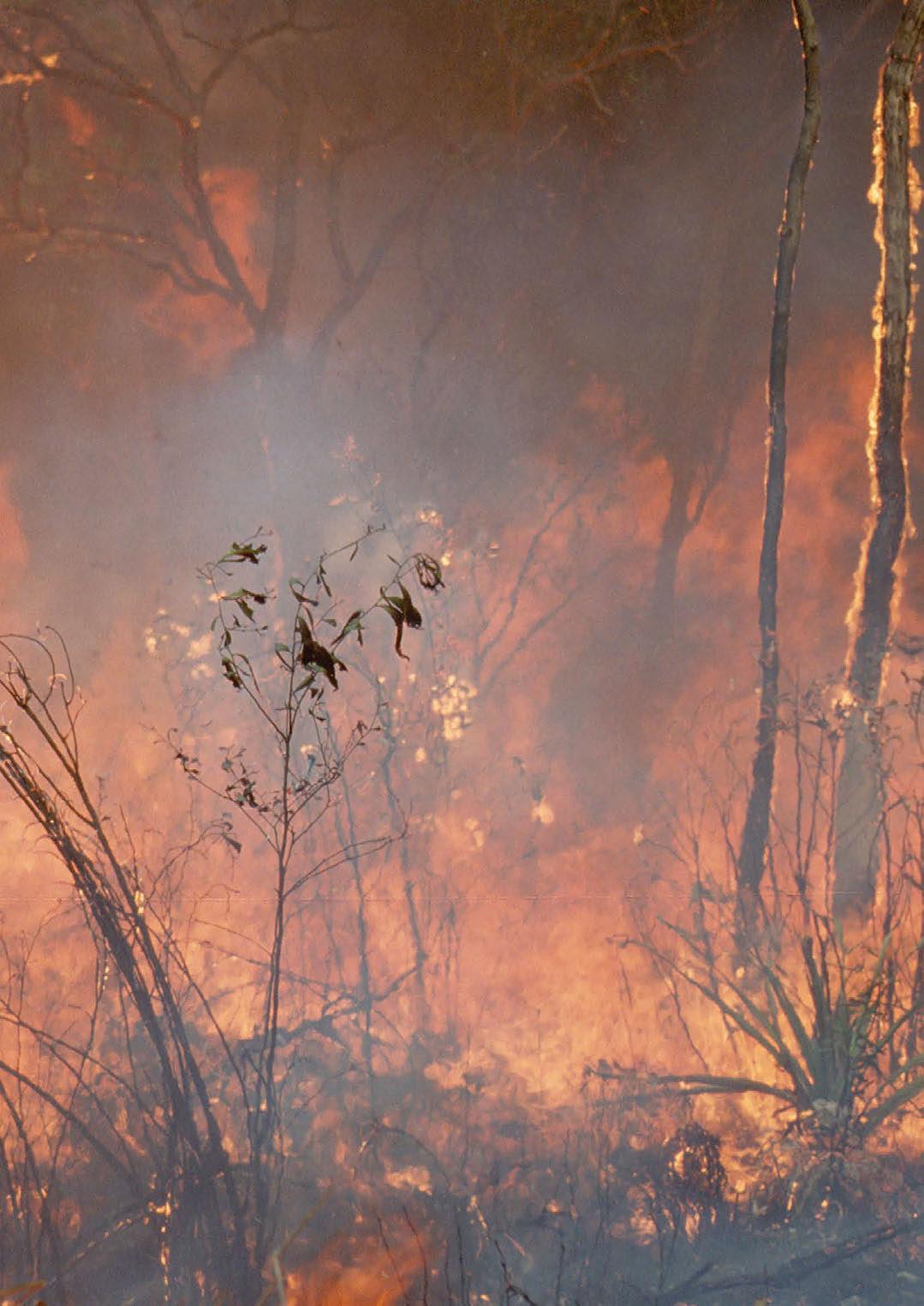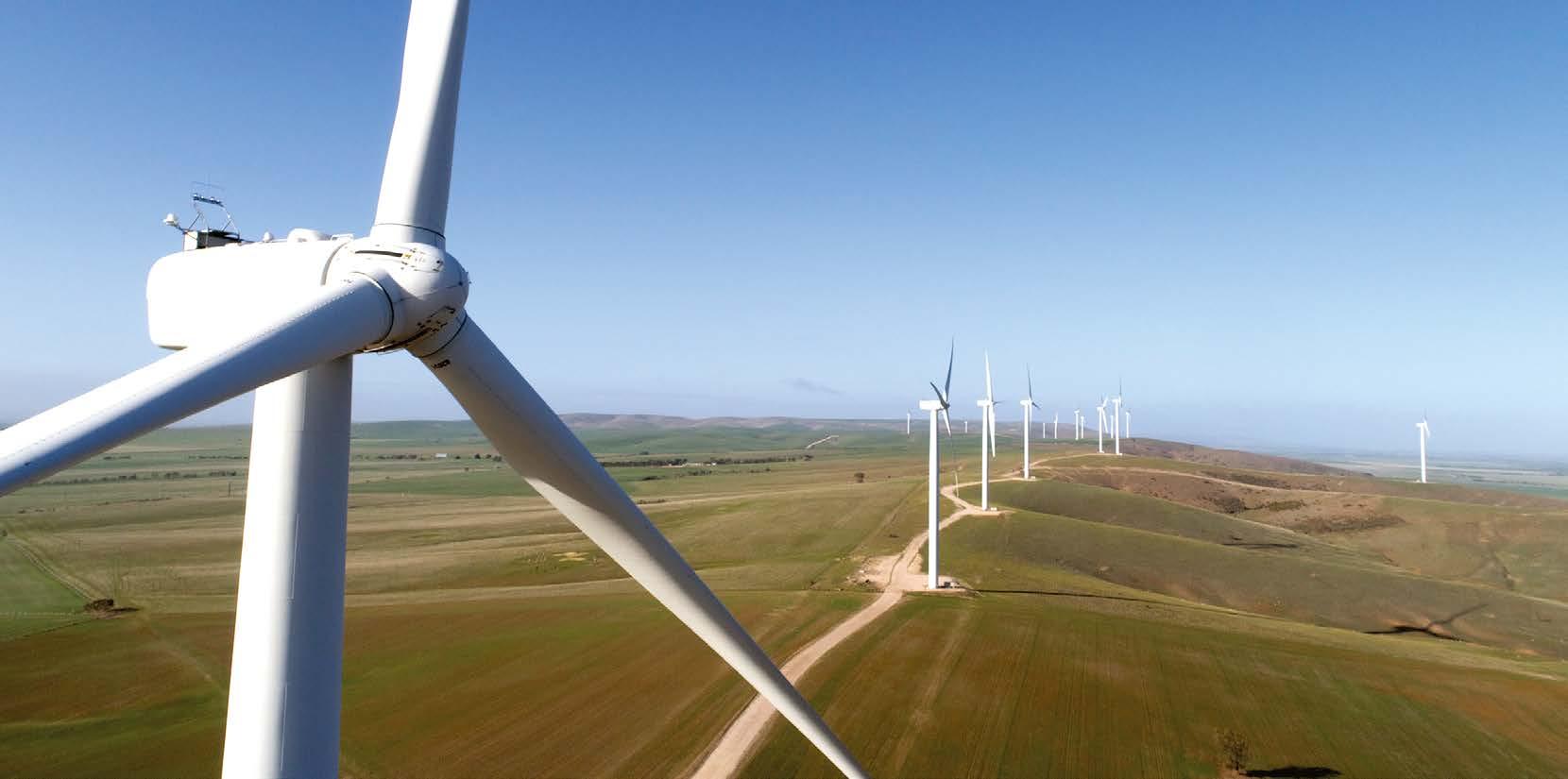
10 minute read
Taking a stand for climate action

The hottest years on record with storms, extreme flooding in some regions versus widespread drought in others, an apocalypse on a dying river with millions of fish deaths. But who really cares? What’s the game plan to prevent further destruction? Are we smart enough to turn the tide?
Advertisement

AS SMART ENERGY was going to print the nation was gearing up for a federal election dubbed “the climate election”. The outcome is indeed pivotal to the future of Australia’s emission controls and action on global warming.
Scrambling to present some sort of climate policy, the Coalition packaged up a Climate Solutions Fund – essentially a rebadged Direct Action plan – that involves $56 million to hasten Tasmania’s ‘Battery of the Nation’ pumped hydro scheme with links to the mainland, and topping up the existing Emissions Reduction Fund (ERF) with $200 million per year over ten years.
The plan also includes a $2 billion injection into Snowy Hydro 2.0, energy efficiency measures for business and households, and a somewhat sketchy electric vehicle strategy. Despite the apparent robust nature of the package, the general consensus was negative. Professor Will Steffan voiced the views of many saying it was a case of “pouring more money after bad” into the ERF.
“Emissions have been rising not declining under the six years of the ERF … it is not working,” the Climate Councillor said.
“The policy lacks action on fossil fuels which are far more important in tackling emissions. We are not on track to meet the Paris targets, this policy does not do that.
“Ultimately the Federal Government is doubling down on a bad policy. For any climate policy to be credible, it must drive down fossil fuel emissions rapidly and deeply.”
Independent candidate for Kooyong Oliver Yates took to the airwaves to explain why the $2 billion injection into the ERF is completely inadequate and that at $200 million a year it represents around the same as what the government is using to market its “wonderful” performance through advertising. “Without a real climate policy we are drifting. Looking like we are doing something but actually doing nothing,” he said.
Smart Energy Council chief executive John Grimes sums the Climate Solutions fund “a continuation of Tony Abbott’s contempt for action on climate change”.
“We are facing a climate change emergency and we need to do whatever we can to increase our solar and renewable energy generation,” he said.
“Instead of fast tracking the connection of renewables, Scott Morrison’s answer is to lock in failed policy.”
Importantly the proposed Tasmania connector would only come into its own once all Victorian coal plants are closed.
So there you have it, and these are just a few of the reactions, but representative of the consensus that the Coalition’s continued treatment of emissions and climate control is no more than superficial. Yet more marketing spin.
The measures are interpreted as doing little to protect Australians from worsening extreme weather and climate events.
The perils wrought by climate change
Imperatives
“Right now there has never been a greater acceptance and understanding of the science of climate change right across Australia,” John Grimes says.
“All of the abnormal climate conditions are speeding up and intensifying and nobody doubts





that. The prospect for runaway global climate change increases. This is sending an alarm siren – not a warning bell. It requires a war-like response to a climate emergency.
“We need leaders to drive the transition to clean energy that will protect our economy and the very climate systems on which we depend for life.
“Nothing can be more important,” John Grimes warns.
Life under Labor
Should Labor gain power at the May federal election, the party would pick up where the National Energy Guarantee left off, but lift the emissions reduction target from 26 per cent to a more realistic 45 per cent by 2030. The party is right to do so. Private polling conducted for environmentalists and the major parties suggests community concern about climate change (and government inaction) is currently sitting at levels not seen since the federal election cycle in 2007.
That’s why Oliver Yates can no longer sit back and listen. The former Liberal stalwart and past chief executive of the Clean Energy Finance Corporation has mounted a strong campaign as an independent candidate in the Liberal ‘safe’ seat of Kooyong, the seat of the current Treasurer.
“Climate change is a core issue. I consider the stance the LNP is taking is dangerous for citizens and I think a government’s core responsibility is to keep its citizens safe,” Oliver Yates said.
Chief Scientist Alan Finkel, AEMO chief executive Audrey Zibelman (left), with Professor Martin Green (right)

Make it. Store it. Manage it. You’ve got the power.



The Enphase Home Energy Solution lets you generate, store, and manage your home’s energy so that you can save money, become more energy independent, and help better the planet.

“It is simply impossible for many Liberal voters to vote for a party that works to prevent any action on climate change, one with the potential to be controlled by the mining industry, rejects the establishment of an integrity commission, backs the Adani coalmine, and is inconsistent with our need to tackle climate change.”
Independent candidate Zali Steggall who is taking on Tony Abbott in the seat of Warringah has called on Labor to commit to scrapping the Adani mine and says Australian taxpayers shouldn’t be investing in coal projects.
“Our financial institutions aren’t prepared to lend or invest in coal projects, why should Australian people’s money be invested … We need an orderly retirement of coal, I don’t think we should be entering new projects,” Steggall said.
“The attention should be with renewables, technology, clean transport, clean energy.”
Shifting sands
The nation’s largest coal miner Glencore has pledged to cap its global coal output at current levels following pressure from activist shareholders as part of a pivot towards minerals used in renewable technologies. Glencore will instead focus on metals such as cobalt, nickel, vanadium and zinc, which are all key components of batteries as it targets lower carbon industries as its customers.
Legal landmark
Another recent yet far-reaching development is the landmark ruling against development of new coal plant Rocky Hill on social and climate change grounds by the NSW Land and Environment Court case, a case that sets a precedent in climate litigation.
The judgment that a new coal mine would increase greenhouse gas pollution when what is needed to meet the Paris Climate Agreement commitments is a rapid and deep decrease in greenhouse gas emissions came as a relief – and breath of fresh air – for local community opponents as well as the renewables industry sector across Australia.
Simon Corbell who was instrumental in ACT’s transition to 100 per cent renewable energy told Smart Energy “The decision highlights how the law, civil society and corporate sectors are increasingly recognising that the impacts of carbon intensive proposals must be factored into long term decision making and regulatory processes.
“Pollution caused by greenhouse gas emissions is simply another

Don’t be afraid of the shade
Our new half-cell modules with unique interconnect design reduces energy loss from shading or soiling.
The new SPLITMAX half-cell modules will transform the way you think about solar panels. Designed for higher yields in industrial, commercial and large scale applications SPLITMAX is 1500V IEC certified which helps reduce BOS cost by connecting more modules in a string. Each module features a split JBOX resulting in lower junction temperatures, further reducing failure rates. To find out more about SPLITMAX, contact the team Trina Solar Australia today.

form of environmental impact we can expect regulators and courts to increasingly seek to avoid or mitigate in their decision making.”
John Grimes questions why anyone would even consider building polluting coal plants to produce electricity when there are cheaper, more cost effective methods involving renewable energy, saying “This momentous court decision sets a precedent in the legal community and demonstrates that while some politicians remain out of step, the courts are likely to uphold common sense and climate action.”
Leading voices
At the UNSW Times Higher Education summit Energy: renewables changing the composition of energy and the mining industry, energy sector leaders agreed on the need to build an energy system that is scalable, sustainable and supported by both government, industry and the general public.
Chief Scientist Alan Finkel led the panel discussion that addressed pressing challenges related to energy including the future of coalgenerated energy, the renewable energy revolution and how policy and government play a role in shaping the energy sector.
Addressing this very issue, Professor Martin Green, Director Australian Centre for Advanced Photovoltaics, UNSW said “At first sight it sounds like renewables is not great for Australia in terms of the resource industry because of the impact it will make on thermal coal export”.


FLEXIBLE DESIGN (2.4 - 60 KWH!) PERFECT FOR HOMES OR BUSINESSES.
MyReserve
The world‘s fi rst truly fl exible and modular solar battery. • Easy installation by one person • Maintenance free design • Perfect for new or existing PV installations • Compatible with single and three phase inverters • Quality German design and manufacture
Safety focussed design Class leading battery effi ciency of 99.2 % 10 year battery performance warranty
Any questions?
www.solarwatt.com.au
“In reality it’s going to create far more opportunity for our traditional resource exports as well as requiring all this supporting technology such as batteries,” the ever-tactful scientist said. Perhaps it’s timely at this point to relay some compelling data assembled by Green Energy Markets which reveals the story so far…
The rise of renewable energy
1987-2017: 12 GW
2018-2020:~12 GW
2 million solar rooftops, with
29.8Mt CO2 abatement (year to October 2018)
Coal
13 closures
0 built in a decade
0 planned
Jobs
Renewables: 24,000
Coal: 35,000
DC coupled solution
Speaking at the Energy summit Audrey Zibelman declared “Our role as researchers and scientists is to keep our view on the prize, where we want to end up, but be very clear on the short term actions we need to make today so that we can continue to address these concerns.
“Part of the problem we have is the ability to get entry into the market for new resources is very complicated,” the chief executive of the Australian Energy Market Operator said. “We are at a stage where if we really want the market to take off we need to be thinking about the policies that allow for quick entry and avoid the ‘valley of death’ so much innovation runs into.
“Thinking in terms of, how do we make it easier as opposed to harder is very important.”
Agreed. Easier and clearer and more genuine with effective outcomes.










